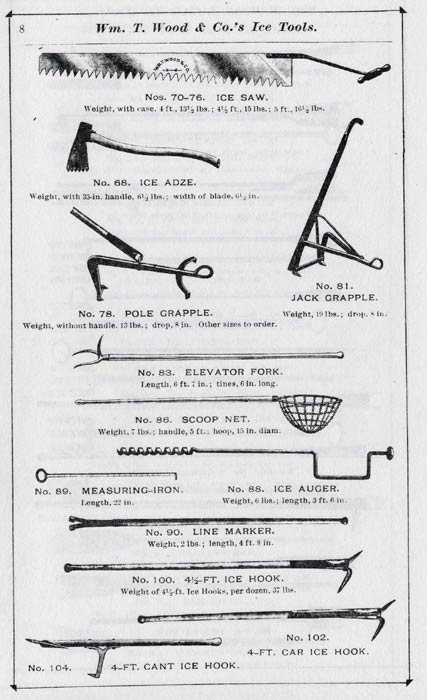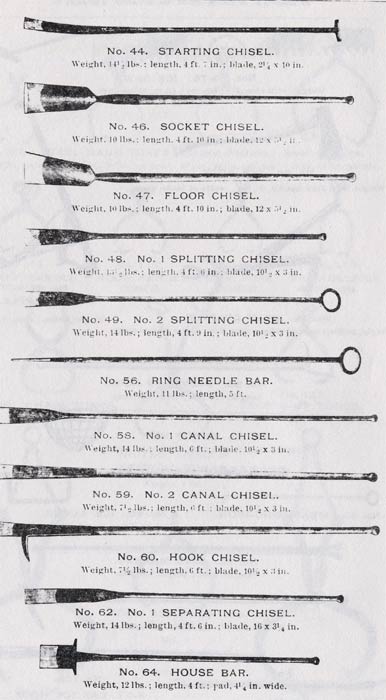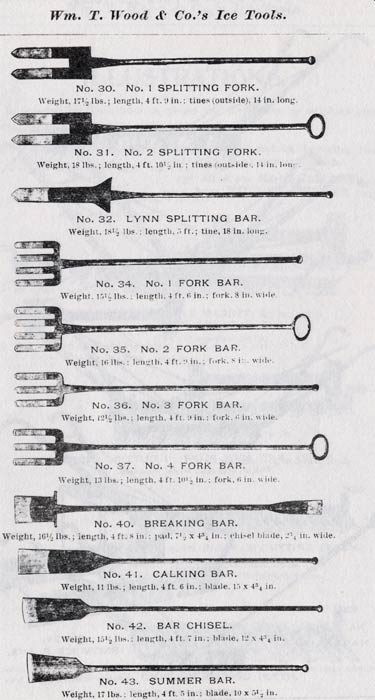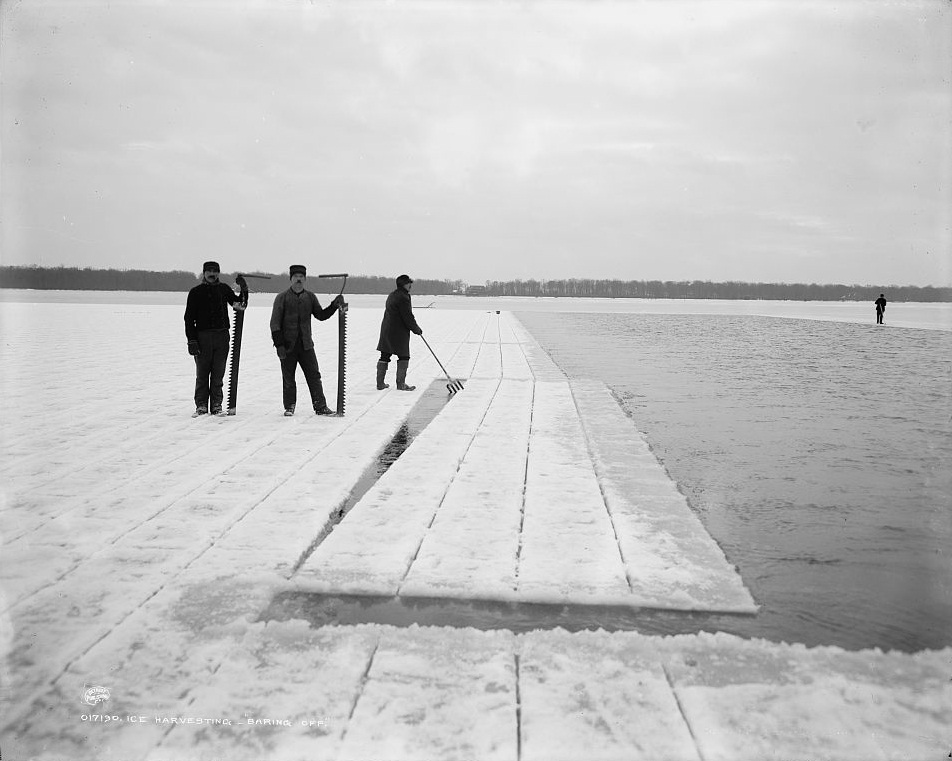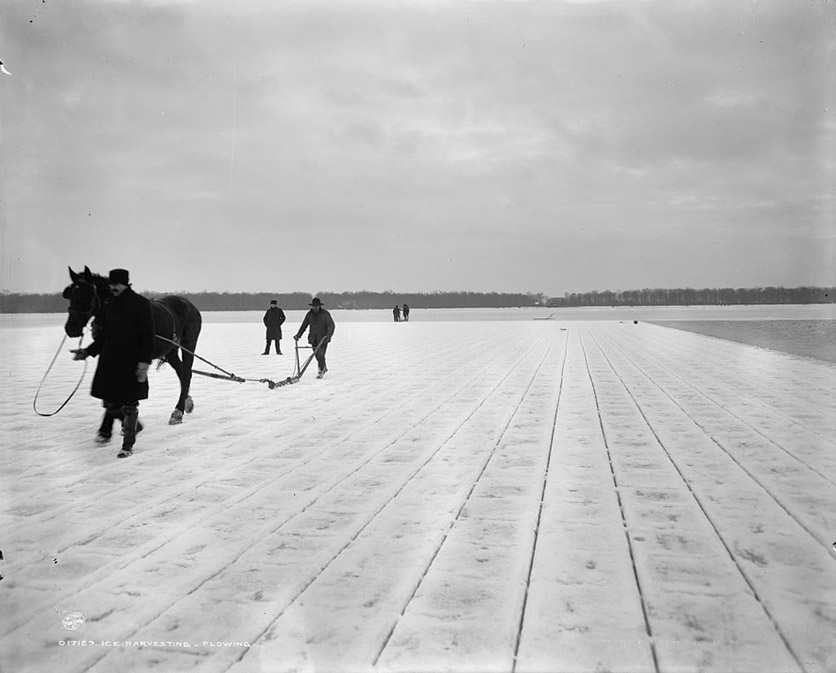Ice Harvesting on Stillwater Lake
Long before modern day refrigeration was available, people relied on ice to store their perishable foods; and from the late 1880s until the 1930s, the ice industry of the Poconos was king.
In 1898 the first ice was harvested from Stillwater Lake. The Tunkhannock Ice Company constructed a 10-room ice house on the eastern shores of the lake where they could store 70,000 tons of ice; and the Wilkes-Barre and Eastern Railroad built a 1½-mile siding directly into the ice house area to transport the ice. Soon after, in 1902, the ice company merged with the Mountain Ice Company. Run by industrialist Samuel Rubel, the Mountain Ice Company was the leading ice company of the area— supplying ice to New York City, Philadelphia, and as far away as the Caribbean.
During the winter, Stillwater Lake freezes to a depth of about 8 to 14 inches thick, and so the ice company would glean the lake for its natural resource of ice. The ice harvesting process was labor intensive.
Crews of men using teams of horses would clear the ice field of snow. Then men measured and marked grids on the ice (usually at 22" x 32" to 44" squares). Horses would pull a tool that cut a groove along the grid. The next step was to cut through the grooves until the blocks broke off. Men used one-handed crosscut ice saws to cut the large blocks of ice. The men would float these massive blocks of ice down a cleared channel to a chute where they were hauled up and into an ice house.
In 1927 there was more than 36,000 tons of ice cut in a single harvest from Stillwater Lake. The blocks of ice were moved up chutes with hooks to various levels as the ice house was filled with layers of ice separated and surrounded by layers of sawdust supplied by lumber mills. The sawdust helped insulate the ice from thawing. If properly stored, the ice in a fully stocked ice house would last throughout the year. Ice was loaded into railroad cars by chutes and shipped by train from the ice house to the various cities throughout the northeast. Each train car would hold 30 tons and there were times that 100 cars of ice left the Poconos each day.
The ice houses at Stillwater were comprised of rooms which were 50-feet wide, 100-feet long and 50-feet high. They were clustered together and made a massive structure that was over 300-feet long, 100-feet wide and 50-feet high. In addition to these buildings, there was another building containing the steam plant to provide the energy necessary to operate the conveyors and other machinery. Some of the foundations of the ice houses are still intact today. A few of the ice houses in the Poconos were dismantled, but the majority were destroyed by lightning after the fall of the ice industry.
The Mountain Ice Company employed over 1,500 men and 100 horses during the height of the harvest. Farmers came from miles around when the cutting started. The ice company had boarding houses for these workers who were paid $0.30 per hour working on the ice and $0.35 per hour while working in the ice houses. It usually took about one hundred days to fill the ice houses, but the record was set one year when the houses were filled in just eleven days.
In the 1920s, competing with the then-new convenience of electric refrigeration, the Mountain Ice Company sold their ice at $0.06 per ton with the motto “a block of ice never gets out of order.” However, with the continuing rise of electric refrigeration in the 1930s, the harvesting of the ice from the lakes became less and less profitable. Eventually, the ice company folded.
In 1949, Samuel Rubel and the Mountain Ice Company donated the land around Stillwater Lake to the Scouts, giving Camp Minsi its home in the Poconos. A temporary camp was established on the southern shore of the lake utilizing the facilities of the old ice industry. The old buildings of the Ice Company were used for the staff housing, dining hall, health lodge, an indoor rifle range and the ranger’s lodging. In the mid-to-late 1950s plans were finally realized for a more permanent camp. Construction of the current camp, along the western side of the lake, was completed in 1958 and the newly expanded camp opened for the first time in the summer of 1959. The old ruins and relics of the massive ice house and ice harvesting industry still remain on the southern and eastern shores of the lake to this day.

